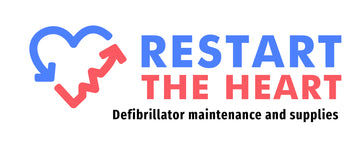Common AED Mistakes and How to Avoid Them
AEDs, or Automated External Defibrillators, are important tools in heart emergencies. They are small devices that can help restart a heart by delivering a powerful shock. However, to be effective, they must be used correctly. Missteps in their usage can lead to delays in treatment, reducing the chances of saving a life.
Misunderstanding AED Functionality
Common misunderstandings about AED functionality can lead to ineffective use during an emergency. Some people think AEDs are too complex for ordinary individuals to operate. This misconception might result in hesitation to use the device, potentially delaying critical treatment. In truth, AEDs are designed for ease of use. They provide clear, step-by-step voice prompts that guide even untrained users through the process.
Another common misconception is that AEDs can harm someone who isn't in cardiac arrest. Rest assured, AEDs analyse the heart's rhythm and only deliver a shock if necessary. They are smart devices equipped with safety features to prevent accidental shocks, ensuring they function accurately.
Additionally, some people might believe AEDs replace CPR. In reality, AEDs and CPR work best together. CPR maintains blood flow to vital organs, while the AED addresses the heart's rhythm. It’s essential to start CPR immediately and continue it until the AED instructs you otherwise.
By clearing up these misunderstandings, users can confidently and promptly act in emergencies. Trusting the device and following its instructions maximises its lifesaving potential.
Incorrect Pad Placement
Correct pad placement is crucial for an AED to function effectively. Proper pad positioning allows the device to accurately analyse the heart’s electrical activity and deliver an effective shock if needed. Incorrect placement can prevent the AED from working or reduce its effectiveness, placing the person at greater risk.
Here's a step-by-step guide to placing AED pads correctly:
1. Expose the Chest: Ensure the skin is dry and clear of obstacles like clothing.
2. Place the Pads:
- First Pad: Position the first pad on the upper right side of the person’s bare chest, just below the collarbone.
- Second Pad: Place the second pad on the lower left side, a few inches below the arm. It should sit on the ribcage area.
These positions create a circuit through the heart, allowing it to receive the necessary shock.
To remember these positions, think of the phrase "upper right, lower left." This can help you quickly recall where to place the pads in a stressful situation. Failing to follow these steps can result in inadequate shock delivery, diminishing the AED's effectiveness in restoring a normal heart rhythm. Pay attention to pad images and instructions, and remember to stay calm to ensure proper placement.
Ignoring AED Maintenance
Failing to properly maintain an AED can have dire consequences. An AED must be in perfect working order to perform during emergencies, and regular maintenance ensures it's ready when needed. Ignoring routine checks can lead to device malfunctions, potentially endangering lives.
To keep an AED in prime condition, follow these maintenance steps:
1. Inspect the Device Regularly: Check the AED at least once a month to ensure it's operational. Look for external damage or signs of wear.
2. Check the Battery and Pads: Verify that the battery is charged and the pads are within their expiration date. An AED with a low battery or expired pads may not function properly.
3. Run a Self-Test: Many AEDs have a built-in self-test feature. Use it to confirm that the electrodes, battery, and internal circuits are functioning correctly.
4. Clean the Device: Keep the AED and its accessories clean and free from dust. A clean AED is less likely to have functional issues.
5. Review Maintenance Logs: Keep detailed records of all maintenance activities. This tracking helps identify recurring problems and ensures the device receives consistent care.
By following these steps, you ensure the AED is ready to perform when it's most needed, giving individuals the best chance of survival during cardiac emergencies.
Delays in Using the AED
During cardiac events, time is critical. Delays in using an AED can drastically impact the victim's chance of recovery. Understanding the reasons behind these delays is key to improving response times and saving lives.
One common reason for delay is uncertainty about using the device. People may hesitate, fearing they might use it incorrectly. Proper training and familiarisation with the AED can boost confidence and shorten response times.
Another issue is accessibility. AEDs should be placed in easily accessible areas, clearly marked with appropriate signage. Ensuring everyone knows where the nearest AED is located is essential in minimising delays.
Communication barriers can also cause delays. In high-stress situations, clear communication among responders is vital to quickly deploy the AED. Practising emergency scenarios can help teams communicate effectively.
To overcome these barriers, consider these strategies:
- Provide Regular Training: Offer training sessions to everyone, including refresher courses, to ensure familiarity.
- Post Clear Instructions: Display straightforward AED instructions near the device to guide users.
- Create an Emergency Plan: Develop a plan that identifies roles and outlines steps during an emergency.
By addressing these common barriers, you can ensure that AEDs are deployed quickly, maximising their lifesaving potential.
Conclusion
Properly using and maintaining AEDs is a shared responsibility. Understanding the common mistakes and knowing how to avoid them ensures these devices are ready and effective when needed. From accurate pad placement to regular maintenance checks and reducing deployment delays, every step plays a critical role in enhancing response times and outcomes in emergencies.
Restart the Heart is committed to ensuring your AED is a reliable lifesaver. Visit our AED supply store and explore our resources and educational materials to reinforce your readiness and ability to act swiftly. With reliable tools and knowledge at your disposal, you can feel confident in making a life-saving difference when seconds count.

